Zaragoza was founded as a Roman colony under the name of Cesaraugusta. But why was a Roman colony founded in the current territory occupied by Zaragoza? Who founded the city? When? To answer those question we have written a brief summary of the roman history of this city
The foundation of Cesaraugusta
We do not know the exact date of the founding of Cesaraugusta, but historians have agreed that the most probable year was 14 BC, coinciding with the 50th birthday of the emperor.
The city was founded for two reasons. In the first place, they wanted to give land in Hispania to the Roman veterans of the IV Macedonica, VI Victrix and X Gemina legions who had participated in the war against the Cantabrians between 29 and 19 BC. That is why these legions are mentioned in the coins minted in the mint of this Roman colony.
Second, it was convenient to build a large city in the area, since said city would be an excellent communication point between the interior of the peninsula and the Mare Nostrvm thanks to the navigability that the Ebro river had at that time.
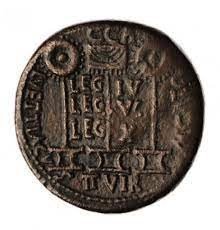

The foundation ceremony of Roman Zaragoza
We know that rites were performed for the founding of the city. This founding rite consisted of several phases. First of all the augur, the Roman priest, had to consult the omens. In this way he made sure that the place chosen to build the colony was to the liking of the gods. Then a well was dug that the Romans called “mundvs”. In this well land was buried from the place of origin of the settlers and various offerings were made. After this, with a bronze plow drawn by a team of oxen, the settlers carved a furrow where they raised the wall.
We know this because there are coins from the Cesar Augusta Mint in which a team of oxen appears on one side that alludes to the founding rite and on the other side Marco Vipsanio Agrippa, Augustus’ son-in-law and favorite general.
Roman monuments in Zaragoza
The Roman forum was built in the current Plaza del Pilar. Over there the curia, the basilica and the temple were located. We know that this temple was located under the current cathedral of El Salvador de Zaragoza, it was a hexastyle and was dedicated to “august piety.” A coin is preserved in which this temple is represented.
Roman walls were also built. It is believed that a first wall was built during the foundation, to give “dignitas” to the city. Later that first wall was rebuilt in the 3rd century so that the city would be better prepared in case the barbarians tried to take the city.
A Roman theater, thermal baths and a river port were also built in the 1st century AD. Currently the vestiges of these old buildings are part of the Roman Museum of Zaragoza.

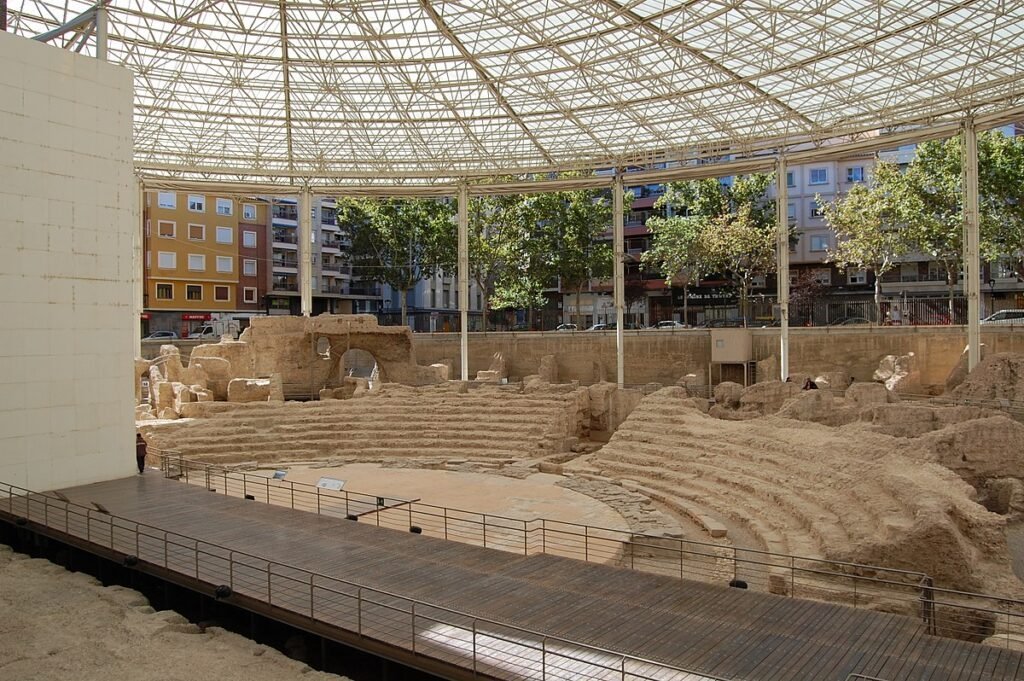
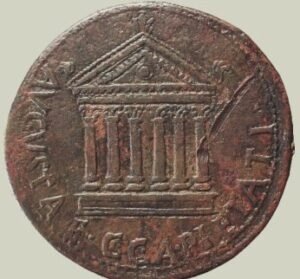
Beautiful mosaics among the Roman ruins of Caesaraugusta
Mosaics of great beauty have been found in Roman Zaragoza dating from the second century.
The two most notorious examples of mosaics found during this time are “the Triumph of Bacchus” and another depicting Orpheus. These mosaics were found in “domus”, houses of wealthy people.
The rediscovery of these mosaics indicate that in Cesaraugusta, like the empire of which it was a part, it was still prosperous in the second century and the rich known as “honestiores” still preferred to live in domus.
Already in the third century the decline entered the city. The rich build villas in the countryside fleeing the city to avoid the tax burden (it was easier to avoid tax collectors there). That is why we hardly keep any remains of luxury in Caesaraugusta from the third century.
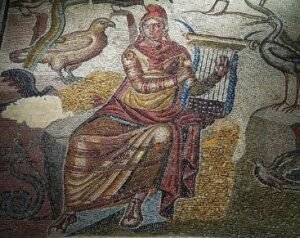
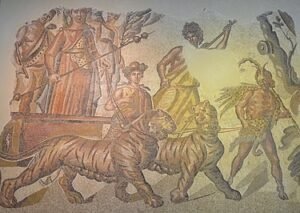
Los Innumerables mártires de Zaragoza
From the 4th century we have news of the execution of the “Countless martyrs of Zaragoza“. The Spanish-Roman poet Prudencio tells us about the torture of these martyrs in his work the “Peristephanon.” We keep two Christian sarcophagi from that time, “the Receptio Animae” and “the Sarcophagus of the Petrine Trilogy”. Both sarcophagi were found in the crypt of Santa Engracia.
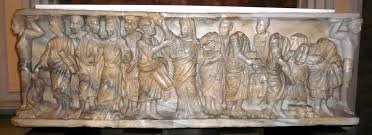

The fall of the Roman Empire in Cesaraugusta
Finally, in 472, the city is taken by the Visigoths ending the Roman domination of the city. Cesaraugusta will cease to be called Cesaraugusta and during the rule of the Visigoths it will become known as Cesarocosta.
4 years later, in 476 AD, the Western Roman Empire fell after the last emperor Romulus Augustulus was deposed in Rome by the Herulus Odoacer. Therefore, Cesaraugusta falls as a Roman city almost at the same time as Rome itself.
Bibliographical sources
Guillermo Fatás (dir.), Guía Histórico-Artística de Zaragoza, Zaragoza, Institución «Fernando el Católico»-Ayto. de Zaragoza, 2008
Almudena Domínguez Arranz, Alberto Aguilera Hernández, Caesar Augusta en imágenes: la colección de monedas del Museo de Zaragoza, Acta Nunimismmàtica, 41/42
Barcelona 2010-2011


2 thoughts on “Zaragoza during roman times”